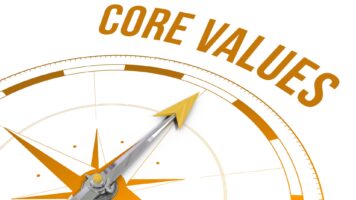Opportunity - Which Flag Are You Flying?

Personal Development
October 22, 2015
Paul LaRue
Author of The UPwards Leader
Topics
Management, Motor Sports, supervisionLiving 13 miles away from Loudon, New Hampshire, places me next door to New England's largest sporting venue, the New Hampshire Motor Speedway.
A large mile-long track attracts numerous events throughout the racing season.
But twice a year, over 100,000 racing fans come to camp out all week and see the NASCAR circuit races throughout a major event-filled weekend.
Not particularly a racing fan myself, but a sporting fan overall, I enjoy watching the rules and strategies come into play, particularly how the drivers adjust to the various changes of the race, as designated by the color flags being flown.
Depending on the track conditions or the behavior of a driver, these flags reveal to everyone certain conditions that must be heeded. When flown, these flags give the drivers an indication of what is about to happen or what needs to be responded to.
Flags are given in organizations as well, but in a more subtle sense. When it comes to employee engagement and opportunities to shine within the company, what flags are you flying?
Consider what you are communicating out there as it correlates to the NASCAR flags:
- Green Flag - This flag indicates that the race is on. Is the race - the opportunity to develop, promote, and build your people - a green flag? Are positions posted and everyone given a fair chance to show their talents and skills? Do you create opportunities, projects, and positions for all of your people to grow professionally and in turn grow your company?
- Yellow Flag - A yellow flag shows caution ahead, and indicates that drivers may need to slow down. What are the signs of caution that get communicated to your staff, that prevent them from charging forward, being fully engaged, or even trusting you? Do they have a chance to freely voice their concerns and effect change? Do they feel that the road ahead is littered with debris and speed bumps that will derail their goals or confidence in the organization, or both? Are you cleaning up the track so the green flag can be unfurled again?
- Red Flag - A red flag means to stop the race immediately. Do your people see the red flags that go up in your organization? The person who gets promoted without the job being posted. The downsizing and workforce reductions due to mismanagement or cost avoidance. The questions that don't get straight or honest answers, thus eroding all trust. The actions, contradictions in culture, or broken promises that tell your people to get off the track and find another race. Do you see your own that your people see? Remember, it takes more energy, fuel and momentum to get a car back up to speed after it has been stopped. Stop the red flags before they come out.
- Black flag - A black flag is the consultation flag, signifying a driver needs to address an individual issue quickly. Are you flying a black flag to a person when their otherwise stellar performance starts to lag? Or when their agenda shows their values are not congruent to the organization's and will dilute the team's vision? Do you hesitate to address issues out of fear, indifference, or a willingness to just get rid of the individual? Think of how the impact slows down the other people (drivers) and gets in the way or them doing their work and succeeding. Flying the black flag quickly and effectively coaching the person back on the track will salvage their career; failure to do so may prevent others from trusting your leadership and cause them to put the brakes on their performance by navigating around the debris left in its wake.
- Blue Flag With Yellow Stripe - This is the passing flag, letting other drivers know that faster cars are coming up. This flag can have opposite meanings. Your message to your people can show favoritism to those who you set up to succeed, or obstacles that prevent the others from having a turn in the driver's seat. Or it can be taking your people aside to encourage them to pursue projects and goals that will enable them to zoom ahead in their career and not feel like they are being left in the dust. The decision regarding how you fly this flag is yours, so choose wisely.
- White Flag - A white flag means the lead driver is entering into the final lap. I call this the cheer-leading flag. When your people get close to attaining their goals, do you cheer them on and invite others to do so as well? Are you showing people that opportunity exists for them also, perhaps not during this race but perhaps the next? By highlighting the people who make the most of their opportunities, you not only encourage everyone else on the team to jump in the next time, but also to partake in team efforts to help others succeed in their goals as well.
- Checkered Flag - When the checkered flag waves, the race has a winner. In racing, there is only one winner. That doesn't have to be so in your organization. This doesn't just mean the company as well, but consider how entire teams, departments, and even cross-disciplines can mutually win. A race car driver does not win all by himself or herself. He or she has a dedicated crew and support cast that shares in the victory. A leader who creates true opportunity will allow as many people as possible to win and have a chance to show their skills and worth to the organization. They buy milk and flower wreaths for the team and hoist the cup with them as partners in the overall accomplishments of their mutual victory.
What flags are you flying for your team? Are you truly creating opportunity over multiple races for people to take the pole position on a project, run the lead lap, and go to victory lane? What flags do your people see you flying?
Make sure everyone gets in the race, and help them to run it well.






Hi, Paul – what a colorful analogy:)
I like the visual image of the colored flags flapping in the breexe. Makes me wish we had something as visible to use in our workplaces to communicate what appears to be happening.
Your examples are part memory jogger and diagnostic tool. We are reminded or made aware of the importance of workplace dynamics by imagining a flag of a particular color flapping madly in the wind.
Wonder what would happen if we actually did this:)?
The diagnostic part comes in with those questions you attach and the comments you include. My personal favorite is this double-whammy set of sentences in the Black Flag discussion:
“Do you hesitate to address issues out of fear, indifference, or a willingness to just get rid of the individual? Think of how the impact slows down the other people (drivers) and gets in the way or them doing their work and succeeding.”
The first sentence asks ancomfortable, but necessary question, while the second encourages us to shift our perspective and consider outcomes other than the ones we are after.
Excellent stuff and very thought-provoking:)
John